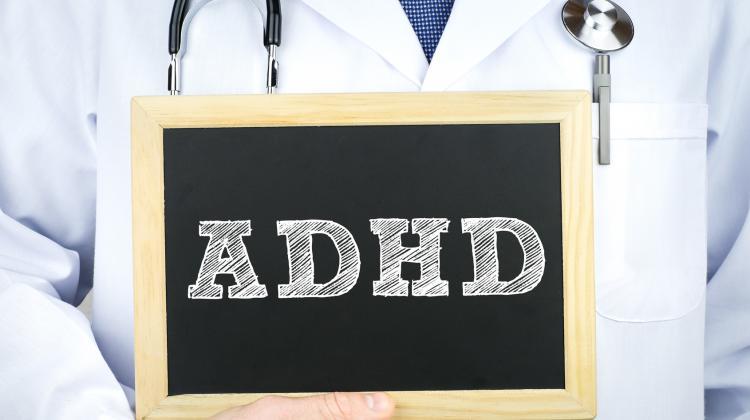Air pollution linked to ADHD in children, new study finds
 Credit: Adobe Stock
Credit: Adobe Stock
A study on a group of over 164,000 Chinese children found a significant link between PM1 and PM2.5 air pollution and ADHD diagnosis. The co-author of the study published in Nature Mental Health is Dr. Iana Markevych from the Institute of Psychology at the Jagiellonian University.
Widespread exposure to airborne particulate matter (PM) is global and raises serious public health concerns. According to the Global Burden of Diseases Study, the rate of morbidity and mortality caused by polluted air has been growing at the fastest rate in the last 30 years. Specifically, exposure to ambient fine particulate matter, particles less than 2.5 micrometers in diameter (PM2.5), contributed to 4.58 million deaths.
In Europe, studies have previously been conducted on the impact of air pollution on the occurrence of ADHD in children, but the results were inconclusive because the sample size was too small. In this sense, the Chinese study brings a lot of new knowledge in this area, Dr. Iana Markevych from the Institute of Psychology of the Jagiellonian University says. According to the co-author of the paper in Nature Mental Health, the strength of the study was the number of participating children. There were over 164,000 of them in total, aged 6-18. They came from three different provinces in China - Guangdong, Liaoning and Kashgar.
'This study stands out due to the number of people tested and the high rate of diagnosed ADHD. The most important finding is that smaller particles, ones that we do not even study on a large scale in Europe and Poland - PM1 - are the most dangerous to health. They penetrate our body much deeper and are more toxic,’ Markevych says.
Exposure to PM1 may have more serious health effects than exposure to PM2.5 due to its ability to deeply penetrate the human body via the bloodstream. Particulate matter can be toxic to nerve cells and cause various diseases.
One of them is attention deficit hyperactivity disorder (ADHD), a chronic neurodevelopmental disorder that begins in childhood and often persists into adulthood. It is characterized by developmentally inadequate inattention, hyperactivity and impulsiveness. It is also one of the most common neurodevelopmental disorders, affecting approximately 3.4% of children worldwide.
'In this large population-based study, we found a significant link between long-term exposure to PM1 and PM2.5 and the likelihood of a positive ADHD screening test result in Chinese children aged 6 to 18,’ Markevych writes.
According to the latest publication, additional factors that accompany polluted air and also affect the increase in the ADHD incidence in children are: living near roads with heavy traffic, premature birth and low birth weight. Children who tested positive for ADHD were less likely to have been breastfed and more likely to live with a cigarette smoker.
'Our results suggest that risk assessors and policy makers should consider not only PM mass concentration and size, but also PM composition and sources when setting regulations to protect children's neurological health,’ says Markevych.
She adds that the results of the Chinese study are important because, unlike Europe, China has a large network of airborne particulate matter measurement stations and has been collecting data for many years.
'In order to properly study the impact of air pollution on the human body, we need a good network of measuring stations. We need at least a few measuring stations per city. There should be at least 20 measuring stations in a large city and on its outskirts. There is a discussion in Europe on how to intensify the PM10 and PM2.5 measurement network. But there are also individual initiatives, like in Augsburg, Germany, where the authorities are investigating PM1 pollution,’ says Markevych.
She continues: ‘EU Member States have a big problem with the debate on tightening the air pollution standards. Some of them put up a lot of resistance. Their main argument is the threat that tightening acceptable standards will cripple industry and economic prosperity.
But what is economic prosperity compared to saving lives? I would like to point out that the loss of human life also has a negative impact on the entire economy.’
The expert also participates in the NeuroSmog research project, where she and her team have examined a group of 740 Polish primary school children. 216 of them were diagnosed with ADHD.
'After the publication of the research results, I will answer the question of to what extent air pollution in Poland affects the diagnosis of ADHD in children. I can already say that the second trimester of pregnancy is probably crucial,’ Markevych says.
She adds that too little attention is paid to polluted air in closed rooms, where people spend a lot of time. When asked why indoor air is not tested as often as outdoor air, she replies that this type of research is still very expensive.
'We talk a lot about polluted atmospheric air, but the topic of polluted indoor air is equally important. Such research is very expensive and no one has yet managed to do it on a large scale, because it requires the installation of expensive air purification devices,’ Markevych says.
Find out more in the source material. (PAP)
Author: Urszula Kaczorowska
uka/ bar/ kap/
tr. RL
Przed dodaniem komentarza prosimy o zapoznanie z Regulaminem forum serwisu Nauka w Polsce.

















